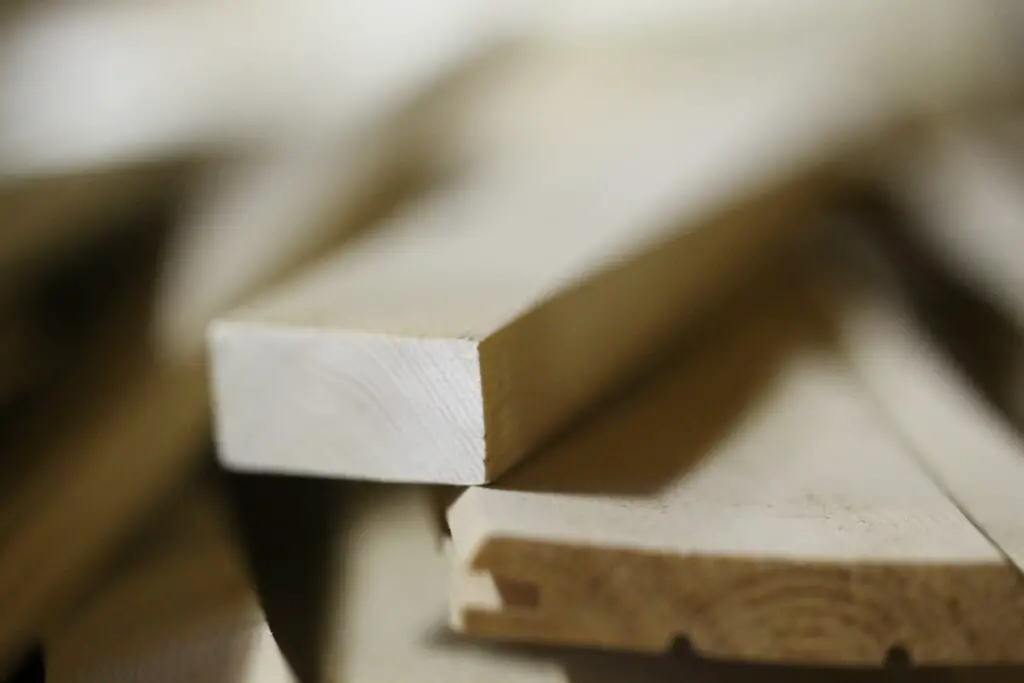Choosing the proper kinds of wood for a home or other building projects is a task in and of itself. It got to be a big job ahead of those who dreamt of it when considering things like constant exposure to the sea, frequent transportation, and the harsh saline air. The wood used in marine construction must be strong and long-lasting. It cannot be too brittle or too soft, and it cannot be too hard to degrade over time. Many possibilities are available, some of which are just around the corner. We will look at why natural woods are the best for the boat.
It is first and foremost necessary to comprehend what is up against the components. Naturally, the most evident is water damage, which may eat away at numerous materials and result in rotting or erosion and shrinkage of the wood over time. Strong winds and persistent sun exposure, in addition to saltwater, can exacerbate the damage. It is not just the conditions that need to be considered, however. If using wood for boat decking or flooring, make sure it can endure bending and other movements, as well as the impact of hitting piers or anything else that lurks beneath the water’s surface.
The most often used hardwoods in boat construction are listed below.
Teak Wood
Teak is a durable and abrasion-resistant wood. It is the most popular wood for boat building outside since it resists warping, cracking, and deterioration. It is used to build boats, hulls, ships, floors, and decks, among other things.
Pros of using Teak Wood:
- It is quite easy to bend because teak wood has been subjected to stress and abuse.
- Teak wood is extremely hard, solid, and durable and contains anti-rot compounds.
- It makes the boat interiors cooler by insulating the deck from the direct sunlight.
- Teak is more water-resistant and durable than mahogany because of its closed-pore, oily texture.
Cons of using Teak Wood:
- Teak is a very pricey wood that is rarely accessible in large quantities.
- Compared to other woods, teak is extremely difficult to carve into various shapes.
- Teak wood, unlike other woods, takes a lot more upkeep and attention than other woods.
- If a loose bung or any other problem in the deck occurs, fix it as soon as possible; otherwise, it will worsen later.
Mahogany Wood
Mahogany is a reddish-brown wood with a fine grain. It can withstand swells, shrinks, and warps and is extremely long-lasting. Although mahogany is extensively used in boat constructions, it is not as long-lasting as teak. It is used to create boats, hulls, interiors, and decks, among other things.
Pros of using Mahogany wood:
- Working with mahogany wood is a breeze, both with hand and machine tools.
- It is a wonderful boat choice because mahogany wood is inherently resistant to rot and decay.
- Compared to other woods, mahogany has the particular benefit of being more widely available, well distributed, and versatile.
- Because of its high-end durability and natural density, mahogany wood is frequently used in boat construction.
Cons of using Mahogany wood:
- Because of its greater endurance, mahogany wood is more expensive.
- Compared to the rest of the woods, mahogany demands much care.
- Because mahogany wood absorbs sunlight, its color darkens over time if it is exposed to it for an extended time.
- Compared to other woods, mahogany is heavy, making it difficult to transport and cut.
Oak Wood
Because of its high natural tannic acid content, oak offers good bending properties and is long-lasting. It has a good finish and is resistant to moisture absorption. Oak is a wonderful choice for shipbuilding, planking, frames, keels, and other applications requiring much strength.
Pros of using Oakwood:
- Because of its high natural tannic acid concentration, oak is more durable.
- When it comes to planking, frames, keels, and other types of tough timber, oak is a suitable choice.
- Because of its incredible capacity to bend to the correct shape after being saturated with steam, oak is especially used in rounder hulls.
Cons of using Oakwood:
- The oak wood may shrink if not adequately cared for, resulting in cracks.
- Staining oak wood is simple, but the stain may darken and give the wood a two-toned unattractive appearance if not done properly.
- Because oak wood is prone to shrinkage, swelling, and cracking, it is often necessary to keep it in good working order.
- Compared to other woods, oak wood is heavy, making it difficult to transport and cut.
Cedar Wood
The most durable of the cedars, yellow cedar is also the most resistant to rot and weathering. It is easy to work with and has a tight grain. Red cedar is prized for its durability, stability, ability to glue well, and rich color when varnished. Cedar is simple to work with with a straight grain and nice finish.
Pros of using Cedarwood:
- Because of its tight grain, Cedarwood is ideal for boat construction and easy to work with.
- Cedarwood possesses anti-fungal, anti-insect, and anti-weed characteristics. That is why it is frequently used for planking.
- Working with Cedarwood is a breeze.
- The strongest cedar species (Lebanon, Yellow, and Red), the Yellow cedar, is also the most resistant to rot.
Cons of using Cedarwood:
- Compared to most woods, Cedarwood also demands much care.
- Cedarwood is also more poisonous.
- Over time, Cedarwood turns a light greyish tint, which may not look good on boats in the future.
- Because of its high endurance, Cedarwood is very expensive.
Plywood
Plywood is made from thin sheets of wood veneer known as plies and is strengthened by stacking the sheets in perpendicular layers. There are an odd number of layers on each piece of Plywood. The strength of a panel in both directions comes from cross-lamination, which is the process of putting the plies perpendicular to one another. The plywood panel is then heat-and pressure-bonded to give it a finished look.
Pros of using Plywood:
- The most popular type of wood for tiny boats is Plywood (DIY works).
- Plywood is a popular and easy-to-use material.
- Compared to other timbers such as teak and mahogany, Plywood is less expensive and easier to cut into any shape.
- Plywood is easy to clean, paint, and provides a smooth surface to laminate or flat surfaces to adhere to.
Cons of using Plywood:
- Because the voids trap moisture and accelerate rot, Plywood is not long-lasting. It also weakens the wood physically.
- Like all other woods used in boat construction, Plywood requires much upkeep.
- More voids are found in Plywood (the small empty spaces inside the wood).
- Plywood is not a good choice for a larger boat because it will not survive very long.
Final Takeaway
In choosing the right kind of wood for boat construction, you have to take a closer look to guarantee that you’ll have high quality materials that will be resilient to the dangers of sailing. It is best to search for the best quality wood for ideal boats ahead. Creating a boat means allotting enough time to review first before actually engaging. It is necessary to know each wood’s components before using them. For best reviews about boat building, better check Boat Diaries as we review the best materials for building a boat.








